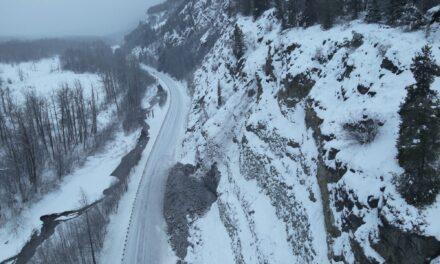Catching a flight to Juneau or back can be a real headache for upper Lynn Canal residents. You’ve probably missed a doctor’s appointment when a wall of clouds kept you sitting in Haines or Skagway, or maybe, stuck in Juneau, you had to spend hundreds of extra dollars on a hotel room.
But taking to the skies is expected to get a lot more reliable.
Regional air service Alaska Seaplanes announced last week that it installed a new, $100,000 GPS technology in several planes that fly to Haines and Skagway. In addition to upgrading its tech, the company got approval from the Federal Aviation Administration for new approaches to Haines and six other airports in Southeast.
According to Seaplanes, the improved electronics and the new approaches will let pilots fly safely in cloudy conditions that, until now, would have caused delays or cancellations.
Company spokesperson Andy Kline told KHNS that the new GPS, made by Garmin, is much more exacting than the old system that the air service used. It’s kind of like “riding on rails,” he said.
“It allows for us in a more precise way to get underneath the weather, go through weather that would otherwise have prevented us from flying and landing at airports. That’s going to create a lot more reliability. We feel like we’re going to be able to get into places a lot more often than we used to be.”
Increased flight reliability could make life easier for Haines residents in a number of ways, from lowering the likelihood of missed medical appointments and missed workdays to attracting and keeping families in town.
Haines Borough School District superintendent Roy Getchell said that the question of access to and from Haines has been an issue for school employees and families and that having a reliable travel option could help — especially in winter when ferry service is sparse.
“Anything we can do to increase quality of life for staff retention and for family retention and for all those things locally I think is important,” he said.
To be sure, the modifications won’t eliminate every chance of a travel hiccup; it could still be too stormy or foggy for planes to fly. But it’s likely to make a noticeable difference.
Actually, it already has, according to Kline. He said that in early March — the company’s first week flying up Lynn Canal with the new system — at least four flights on the Haines route would have been canceled but were able to go thanks to the upgrade.
“That was just in one week and just one of our five pilots flying to Haines.”
The more precise GPS was installed on a mix of the company’s Pilatus and Cessna planes and could improve flying to several Southeast towns. That includes Sitka, Kake, and Hoonah.
In Haines, the cloud ceiling is often too low for pilots relying mostly on visuals to land, and flight-stopping clouds frequently clog up the Lynn Canal.
Now, Seaplanes pilots equipped with the new instruments are good to go when the ceiling is a few hundred feet lower and when visibility is just a mile, half of the old minimum, Kline said. He added that you’ll be a lot less likely to get stuck in Haines or Juneau when the sun is out at the airport but clouds fill the fjord — conditions that have caused infuriating cancellations in the past.
Haines Borough tourism director Rebecca Hylton said it’s unclear to what extent improved flight reliability could affect tourism to Haines. The number of visitors that come to town by plane has dropped significantly in recent years, likely owing more to airfare prices than weather delays, she said.
Tourism aside, Hylton expressed excitement about having a more reliable way to plan travel. She said trouble getting out of Haines has forced her to miss friends’ weddings.
“This will be really nice to know there’s a for-sure way to get out of here.”









